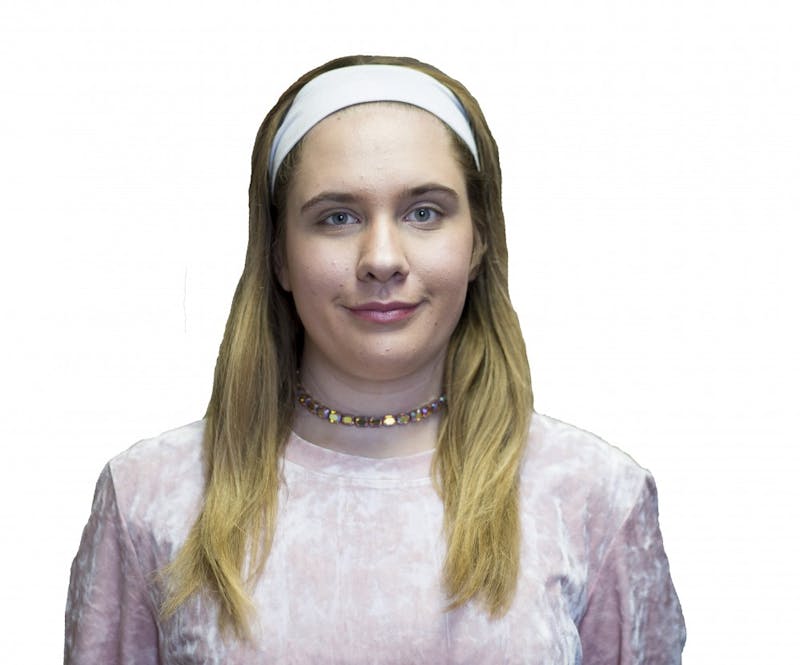CMED student discuss mental illness, suicide at opening day of "Med Student and Physician Suicide Awareness and Prevention week”
Medical school is a competitive, stressful environment — especially for students like Maryssa Lyons who suffers from anxiety disorder and recurrent anhedonia, an inability to feel pleasure.
The first year medical student experiences “chronic suicidal ideation,” she said. The Freeland native considers suicide on a monthly basis — but without a plan or intent.
Lyons gave a presentation to kick off the College of Medicine’s week-long series "Behind the White Coat: Med Student and Physician Suicide Awareness and Prevention week.”
“I feel it is very therapeutic to put your full self out there,” she said, “I think there is a lot of needless suffering in the world and if me being (open about my condition) can help someone else then I think that is a good way to spend my time.”
She began her exhibition with a warning.
“Feel free to take a step out and have a lovely afternoon," she said. "There is no need to cause troubles for yourself.”
Lyons discussed myths and misconceptions about suicide, as well as symptoms, indicators and her own experiences.
Interacting with people who show signs of being suicidal can be a proactive, positive way to provide help, she said.
“At my worst, I wouldn’t leave my house except to go to school. I didn’t keep up with my friends and I really did things to isolate myself,” Lyons said.
Lyons suffers low-risk suicidal patterns. While those of higher risk have created plans for committing suicide, Lyon only imagines the idea of taking her life, both physically and mentally.
“I personally have never had a plan and a lot of people who I have interviewed for my research have had very specific plans," Lyons said. "They take a lot of behaviors for their plans to be a viable, perceivable actions in real life."
Rehearsals are a common action, where the person of high risk will repetitively practice their suicide by developing methods and previewing their death scene.
Other preparations include giving away belongings, insuring a life policy and taking care of any “open business.”
That business can include finishing work projects, completing various goals or mending relationships.
Another important distinction is suicide and self-harm are not the same. While there may be a correlation, suicide is ending life and self-harm carries the intent to continue living.
Lyons participated in psychiatric and suicide prevention research at the University of Michigan for four years prior to attending CMED.
“(The research) really encouraged me to reach out to people, more for my own mental health,” she said.
Lyons encountered many successful, ambitious people who suffered from mental illness, college students who had the determination to achieve academic and career goals, she said.
The experience allowed her to see things from “two sides”, both as a victim to mental illness and an assistant to those suffering it.
“It shaped me for the position I am in today,” she said.
Lyons wants to become a psychiatrist and has a passion for raising awareness about suicide and its signals.
Anyone seeking help for depression or suicidal thoughts can call the National Suicide Prevention Hotline at 1-800-273-8255.
"Behind the White Coat: Med Student and Physician Suicide Awareness and Prevention week" will continue at noon Feb. 23 in CMED Building room 1404.






